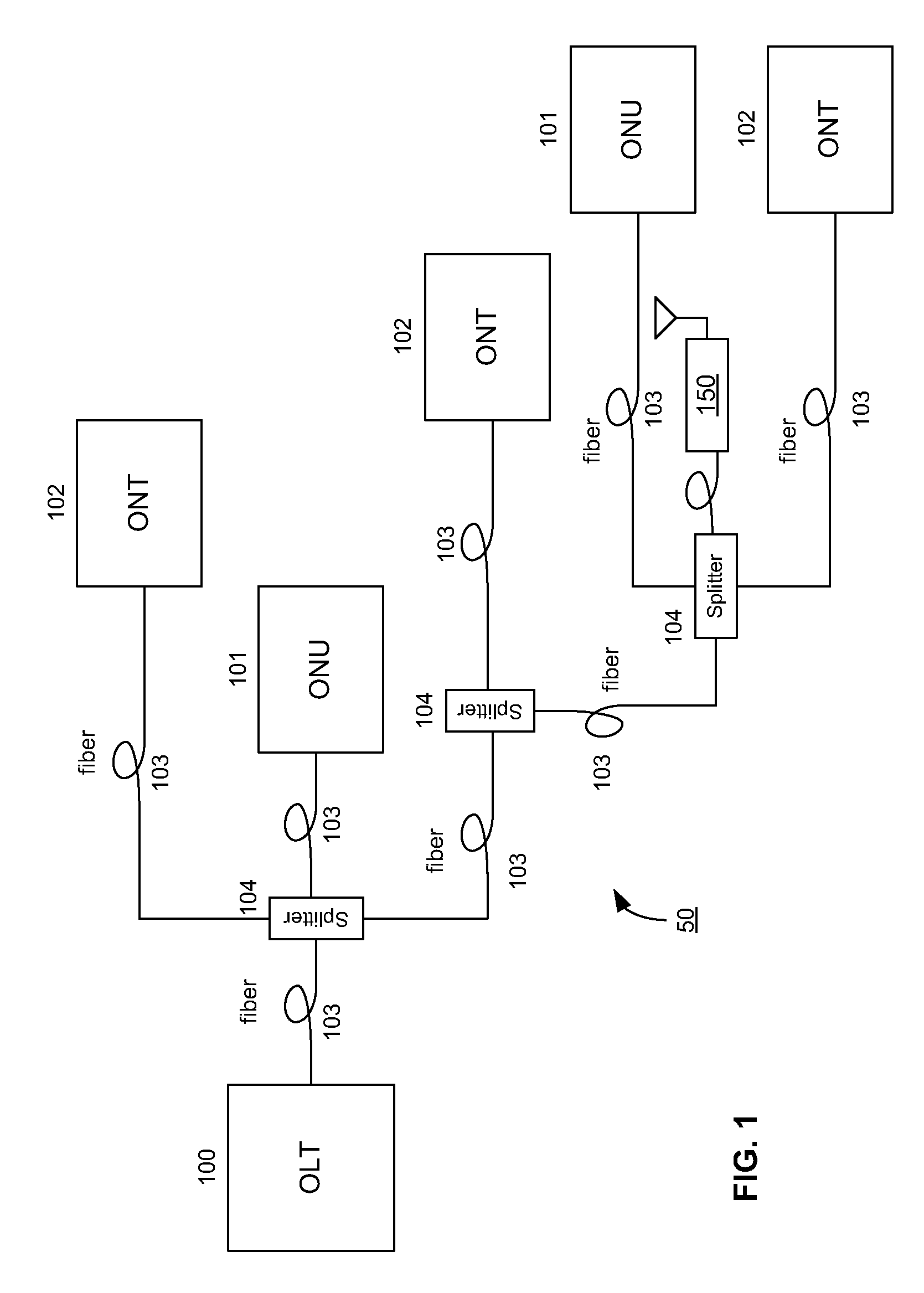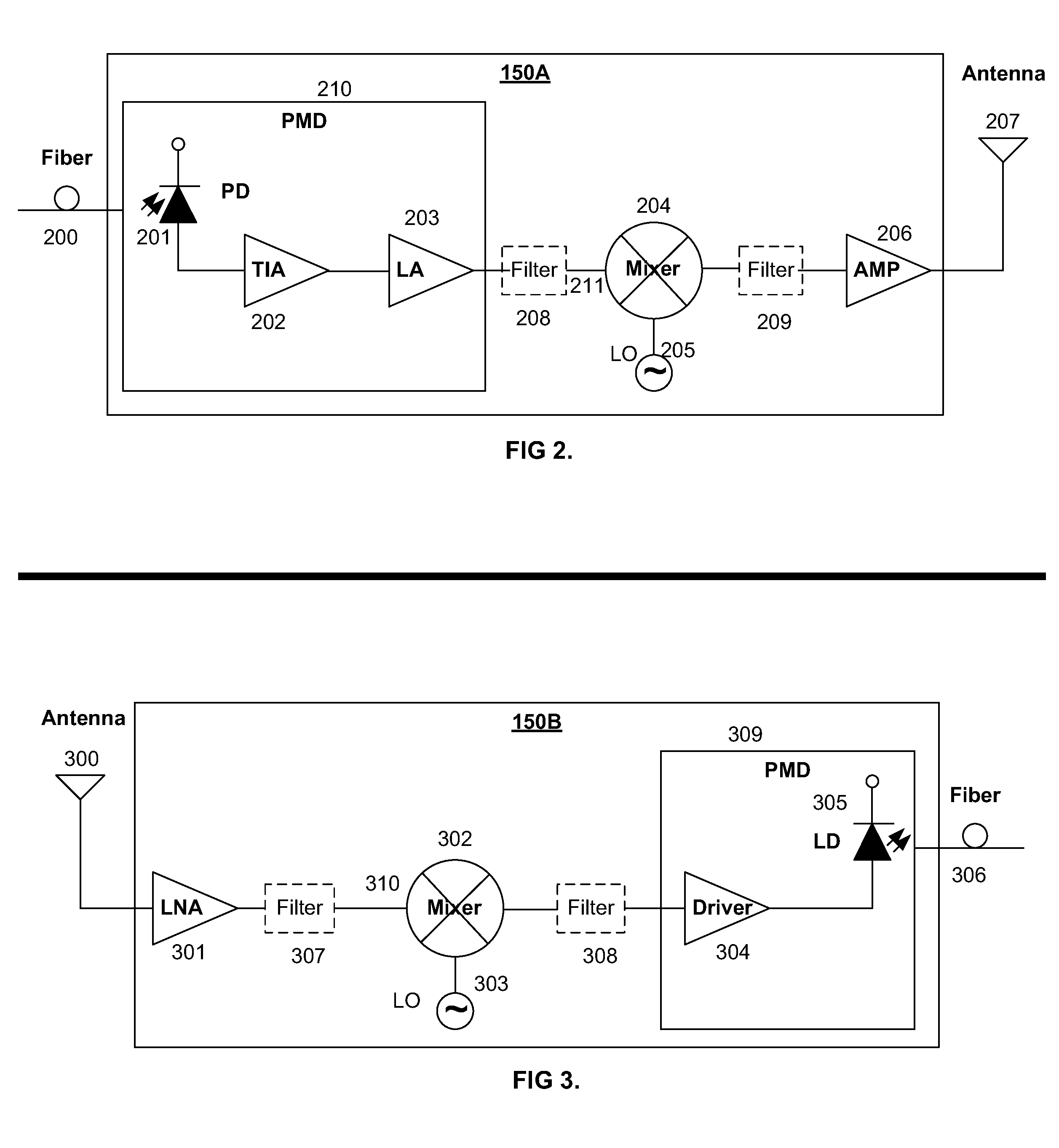Augmenting passive optical networks
a passive optical network and passive optical technology, applied in the field of optical communication networks, can solve the problems of increasing the capex and opex expense of a fiber network service provider, complex cost comparisons, and difficult to obtain, so as to increase the number of splits in the fiber network, reduce the amount of received optical power, and increase the number of splits.
- Summary
- Abstract
- Description
- Claims
- Application Information
AI Technical Summary
Benefits of technology
Problems solved by technology
Method used
Image
Examples
Embodiment Construction
[0027]Passive Optical Network (PON) fiber links can be augmented to use radio frequency (RF) communication links. A PON can be configured in a point-to-multipoint fiber optic network in a tree-branch network architecture. FIG. 1, wherein like reference numerals designate identical or corresponding parts throughout the several views and embodiment, shows an example of a PON, where an Optical Line Terminator (OLT) 100 provides broadband communication to a plurality of client optical networking devices, including Optical Network Units (ONUs) 101 and Optical Network Terminals (ONTs) 102, at nodes in an Optical Distribution Network (ODN) 50. ODN 50 includes optical fibers 103, splitters 104, optical fiber splices (not shown) and optical fiber connectors (not shown) between an OLT 100 node and ONU 101 and ONT 102 nodes. The splitters 104 are unpowered optical splitters which generally utilize Brewster's angle principals. Any of a variety of PON embodiments may be used including embodiment...
PUM
 Login to View More
Login to View More Abstract
Description
Claims
Application Information
 Login to View More
Login to View More - R&D
- Intellectual Property
- Life Sciences
- Materials
- Tech Scout
- Unparalleled Data Quality
- Higher Quality Content
- 60% Fewer Hallucinations
Browse by: Latest US Patents, China's latest patents, Technical Efficacy Thesaurus, Application Domain, Technology Topic, Popular Technical Reports.
© 2025 PatSnap. All rights reserved.Legal|Privacy policy|Modern Slavery Act Transparency Statement|Sitemap|About US| Contact US: help@patsnap.com



